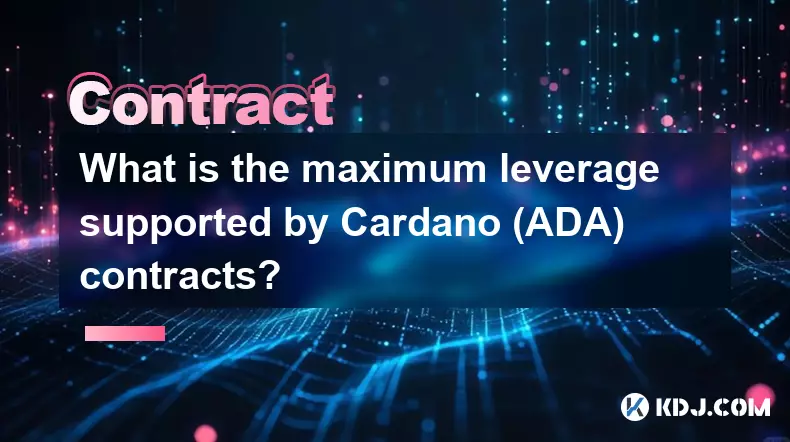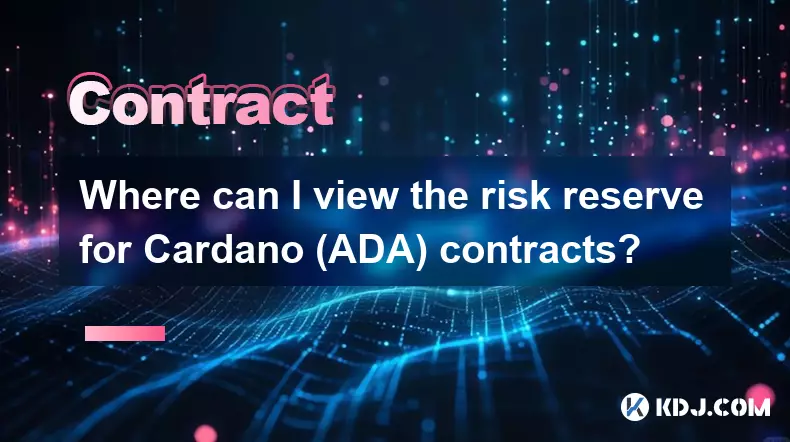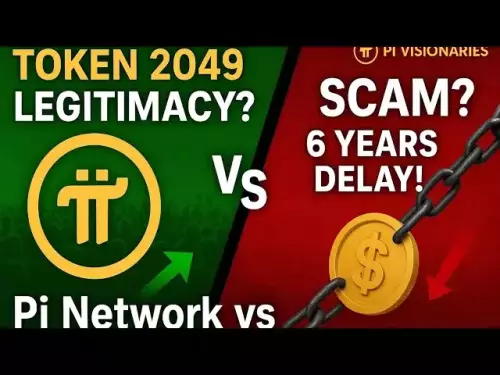-
 bitcoin
bitcoin $114779.865156 USD
2.30% -
 ethereum
ethereum $4226.519789 USD
2.39% -
 tether
tether $1.000545 USD
0.04% -
 xrp
xrp $2.890223 USD
0.92% -
 bnb
bnb $1030.029301 USD
2.95% -
 solana
solana $212.824944 USD
1.69% -
 usd-coin
usd-coin $0.999757 USD
0.01% -
 dogecoin
dogecoin $0.234961 USD
-0.27% -
 tron
tron $0.337174 USD
0.42% -
 cardano
cardano $0.804783 USD
0.09% -
 hyperliquid
hyperliquid $45.748770 USD
-2.85% -
 chainlink
chainlink $21.699170 USD
0.82% -
 ethena-usde
ethena-usde $1.001452 USD
0.08% -
 avalanche
avalanche $30.237800 USD
1.14% -
 stellar
stellar $0.372604 USD
1.52%
Can I adjust the leverage for TRON (TRX) contracts after opening a position?
Adjusting leverage in TRX futures changes liquidation price and margin needs, helping manage risk or boost exposure during volatile market swings.
Sep 29, 2025 at 06:37 pm

Understanding Leverage in TRON (TRX) Futures Trading
1. Leverage allows traders to control a larger position using a smaller amount of capital. In the context of TRON (TRX) futures contracts, leverage amplifies both potential gains and losses. Most major cryptocurrency derivatives exchanges such as Binance, Bybit, and OKX support adjustable leverage for TRX perpetual and quarterly contracts.
2. The ability to modify leverage after opening a position depends on the exchange’s infrastructure and risk management model. On platforms like Bybit and KuCoin, users can adjust leverage at any time during an open trade through the position interface. This flexibility helps traders manage margin efficiency and liquidation risks dynamically.
3. Adjusting leverage does not alter the entry price or unrealized PnL directly but impacts the liquidation price and margin ratio. Increasing leverage reduces the buffer against adverse price movements, bringing the liquidation point closer. Conversely, lowering leverage enhances safety margins, pushing the liquidation price further from the current market value.
4. Some exchanges impose restrictions based on position size or contract type. For example, certain high-leverage tiers may only be available for positions below a specified notional value. Traders must review the leverage ladder and tiered maintenance margin requirements before making adjustments.
5. Real-time leverage modification is particularly useful during volatile market phases. If TRX experiences sharp momentum, reducing leverage can protect against sudden reversals. During trending conditions, increasing leverage—cautiously—can optimize capital deployment without opening new positions.
Platform-Specific Rules for TRX Leverage Adjustment
1. Binance allows leverage changes on TRX futures through the “Leverage” button adjacent to open positions. The update applies instantly, recalculating margin and liquidation levels. No additional orders are triggered by this action, but the effective margin ratio shifts immediately.
2. On OKX, leverage adjustment is permitted across isolated and cross-margin modes. However, when switching between these margin modes, the system requires confirmation and may enforce a temporary pause in modifications to prevent manipulation during extreme volatility.
3. Gate.io provides a slider-based interface for fine-tuning leverage values. Users can set non-integer levels (e.g., 12.5x), offering granular control. This feature benefits strategies requiring precise risk calibration on TRX contracts.
4. Huobi (HTX) enforces a cooldown period after large price swings, temporarily disabling leverage edits to prevent cascading liquidations. This mechanism prioritizes platform stability over user flexibility during turbulent periods.
5. Deribit, while less focused on altcoin contracts, permits leverage updates on TRX futures but limits maximum leverage to 50x, lower than some competitors. Their conservative caps reflect stricter risk protocols for non-BTC/ETH assets.
Risk Implications of Modifying Leverage Mid-Trade
1. Changing leverage alters the position's vulnerability to liquidation. A trader holding a long TRX position at 20x who increases to 50x faces significantly higher risk if the market dips, even slightly. The maintenance margin requirement scales with leverage, tightening the acceptable drawdown range.
2. Lowering leverage frees up usable balance, which can be allocated to other trades or used as collateral. This reallocation supports portfolio diversification and improves overall account health without closing existing positions.
3. Frequent leverage adjustments may indicate poor initial planning or emotional trading behavior. While tools exist for dynamic management, disciplined traders typically define leverage parameters before entry based on their strategy and risk tolerance.
4. Exchanges do not charge fees for modifying leverage, but improper timing can lead to indirect costs. For instance, increasing leverage just before a funding rate payment could amplify negative carry if the position remains open through settlement.
5. Misjudging the impact of leverage changes can result in premature liquidation, especially in low-liquidity environments where TRX price slippage is pronounced. Always verify the updated liquidation price after any adjustment.
Frequently Asked Questions
Can I change leverage if my TRX position is close to liquidation?Yes, most platforms allow leverage reduction even when the position is near liquidation. Reducing leverage increases the margin ratio and moves the liquidation price further away, potentially saving the position from being closed.
Does adjusting leverage affect my open orders on TRX contracts?No, modifying leverage only impacts the margin and liquidation level of the active position. Open limit or stop orders remain unaffected and will execute based on price conditions regardless of leverage settings.
Is it possible to set automatic leverage adjustments based on TRX price?No major exchange currently offers automated leverage scaling tied to price triggers. All adjustments must be initiated manually through the trading interface or API with custom logic.
Will changing leverage trigger a margin call?Increasing leverage does not initiate a margin call directly, but it lowers the threshold at which one occurs. If the new liquidation price is breached due to adverse movement, the position will be force-liquidated according to the exchange’s rules.
Disclaimer:info@kdj.com
The information provided is not trading advice. kdj.com does not assume any responsibility for any investments made based on the information provided in this article. Cryptocurrencies are highly volatile and it is highly recommended that you invest with caution after thorough research!
If you believe that the content used on this website infringes your copyright, please contact us immediately (info@kdj.com) and we will delete it promptly.
- BlockDAG, DOGE, HYPE Sponsorship: Crypto Trends Shaping 2025
- 2025-10-01 00:25:13
- Deutsche Börse and Circle: A StableCoin Adoption Powerhouse in Europe
- 2025-10-01 00:25:13
- BlockDAG's Presale Buzz: Is It the Crypto to Watch in October 2025?
- 2025-10-01 00:30:13
- Bitcoin, Crypto, and IQ: When Genius Meets Digital Gold?
- 2025-10-01 00:30:13
- Stablecoins, American Innovation, and Wallet Tokens: The Next Frontier
- 2025-10-01 00:35:12
- NBU, Coins, and Crypto in Ukraine: A New Yorker's Take
- 2025-10-01 00:45:14
Related knowledge

What is the maximum leverage supported by Cardano (ADA) contracts?
Sep 30,2025 at 03:37am
Understanding Leverage in ADA Derivatives Trading1. Leverage in cryptocurrency futures and perpetual contracts allows traders to control larger positi...

How do I use the scheduled order feature in Cardano (ADA) contracts?
Sep 28,2025 at 10:18pm
Understanding Scheduled Orders in Cardano Smart ContractsCardano operates on a proof-of-stakes consensus mechanism and uses the Plutus scripting langu...

Can I modify the leverage of Cardano (ADA) contracts after opening a position?
Sep 30,2025 at 08:19am
Understanding Leverage in Cardano (ADA) Futures Trading1. Leverage allows traders to control larger positions using a smaller amount of capital. In th...

Where can I view the risk reserve for Cardano (ADA) contracts?
Sep 29,2025 at 09:19pm
Risk Reserve Overview in Cardano (ADA) Ecosystem1. The concept of a risk reserve within the Cardano blockchain does not align with traditional central...

How do I enable the "scalping-only" mode for Cardano (ADA) contracts?
Sep 24,2025 at 03:19am
Understanding Scalping Strategies in Crypto Derivatives1. Scalping in cryptocurrency trading refers to executing multiple short-term trades within min...

What is the settlement time for Cardano (ADA) contracts?
Sep 28,2025 at 04:18am
Understanding Cardano's Contract Settlement Mechanism1. Cardano operates on a proof-of-stake consensus model known as Ouroboros, which fundamentally i...

What is the maximum leverage supported by Cardano (ADA) contracts?
Sep 30,2025 at 03:37am
Understanding Leverage in ADA Derivatives Trading1. Leverage in cryptocurrency futures and perpetual contracts allows traders to control larger positi...

How do I use the scheduled order feature in Cardano (ADA) contracts?
Sep 28,2025 at 10:18pm
Understanding Scheduled Orders in Cardano Smart ContractsCardano operates on a proof-of-stakes consensus mechanism and uses the Plutus scripting langu...

Can I modify the leverage of Cardano (ADA) contracts after opening a position?
Sep 30,2025 at 08:19am
Understanding Leverage in Cardano (ADA) Futures Trading1. Leverage allows traders to control larger positions using a smaller amount of capital. In th...

Where can I view the risk reserve for Cardano (ADA) contracts?
Sep 29,2025 at 09:19pm
Risk Reserve Overview in Cardano (ADA) Ecosystem1. The concept of a risk reserve within the Cardano blockchain does not align with traditional central...

How do I enable the "scalping-only" mode for Cardano (ADA) contracts?
Sep 24,2025 at 03:19am
Understanding Scalping Strategies in Crypto Derivatives1. Scalping in cryptocurrency trading refers to executing multiple short-term trades within min...

What is the settlement time for Cardano (ADA) contracts?
Sep 28,2025 at 04:18am
Understanding Cardano's Contract Settlement Mechanism1. Cardano operates on a proof-of-stake consensus model known as Ouroboros, which fundamentally i...
See all articles










































































